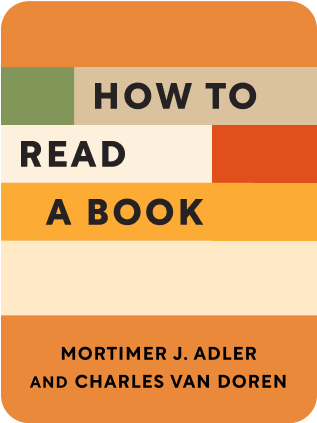

This article is an excerpt from the Shortform book guide to "How to Read a Book" by Mortimer J. Adler and Charles van Doren. Shortform has the world's best summaries and analyses of books you should be reading.
Like this article? Sign up for a free trial here .
How can inspectional reading help you comprehend a book better? How do you read inspectionally?
Mortimer Adler’s book How to Read a Book describes inspectional reading as the second level of reading. At this level, a reader can understand the main concepts of the book by skimming it and reading its high-level content.
Learn how you can understand a book in just 15 minutes with inspectional reading.
The Second Level of Reading
The bulk of Mortimer Adler’s How to Read a Book is about four levels of reading, each increasing in difficulty and complexity. Here they are at a high level:
- Elementary
- This is pure mechanical reading of text and comprehension of what the symbols literally mean.
- This is where most remedial courses aim, and the extent to which reading is taught in school.
- Inspectional
- This is a skimming of the book to understand its main points and its structure. It aims to gain the best understanding of the book in a limited time.
- This is achieved by reading the table of contents, index, and key summaries of major chapters.
- Analytical
- This aims to gain the best understanding of the book in unlimited time.
- Not only should you aim to understand what is being said, you should develop a personal opinion about its validity.
- This isn’t necessary if your goal is simply information or entertainment.
- Syntopical
- This aims to compare books and authors to one another, to model dialogues between authors that may not be in any one of the books.
This article will explore inspectional reading in greater detail.
Inspectional Reading
Inspectional reading is a skimming of the book to understand its main points and its structure. It aims to gain the best understanding of the book in a limited time.
When most people read a book, they do so cover to cover, starting with page one and reading it all the way to the end. While this is more straightforward in some ways, it’s actually worse for comprehension – you’re trying to understand what a book is about at the same time you are trying to understand it.
With inspectional reading, your goal is to gain the best understanding of the book in a limited time. Set a target for 15 minutes to comprehend a 300-page book.
Analogy: Think of yourself as a detective looking for clues to a book’s general idea.
How to Read Inspectionally
After reading inspectionally, you want to be able to answer these three questions:
- What genre does the book fit into?
- What is the book saying as a whole?
- What is the structure of the book used to develop the main point?
Techniques for Inspectional Reading
- Read the title.
- This can be more informative than you think. “The Decline and Fall of the Roman Empire” suggests the book begins with the height of the Empire, at the Age of the Antonines. It doesn’t cover the rise of the Roman Empire.
- Read the preface, blurb.
- The author often explain what the book is about, and how to tackle it.
- Read the table of contents.
- (Shortform note: This is less effective if books now obfuscate titles to generate a sense of mystery.)
- Scan the index for range of topics covered. More important topics will have more pages.
- Find the main chapters of the book, and read the summary areas of those chapters.
- The summary areas are often at the end of the chapter, or at the end of each major section.
- Thumb through the book, listening for the basic pulse of the book.
- (Shortform suggestion: also try reading the top Amazon reviews of the book, or scanning through our summary of a book.)
When tackling a difficult book, never pause to look up things you don’t know. This will make you miss the forest for the trees. Even if you understand less than 50%, this cursory reading will improve your comprehension on the second time around, ultimately saving time.
- School taught us bad habits: we were instructed to pay attention to things we didn’t understand, to go to a dictionary with an unfamiliar word, to define every allusion and consult footnotes. The author bemoans the way Shakespeare is taught – students never really read Shakespeare.

———End of Preview———
Like what you just read? Read the rest of the world's best book summary and analysis of Mortimer J. Adler and Charles van Doren's "How to Read a Book" at Shortform .
Here's what you'll find in our full How to Read a Book summary :
- How to be a better critic of what you read
- Why you should read a novel differently from a nonfiction book
- How to understand the crux of a book in just 15 minutes






